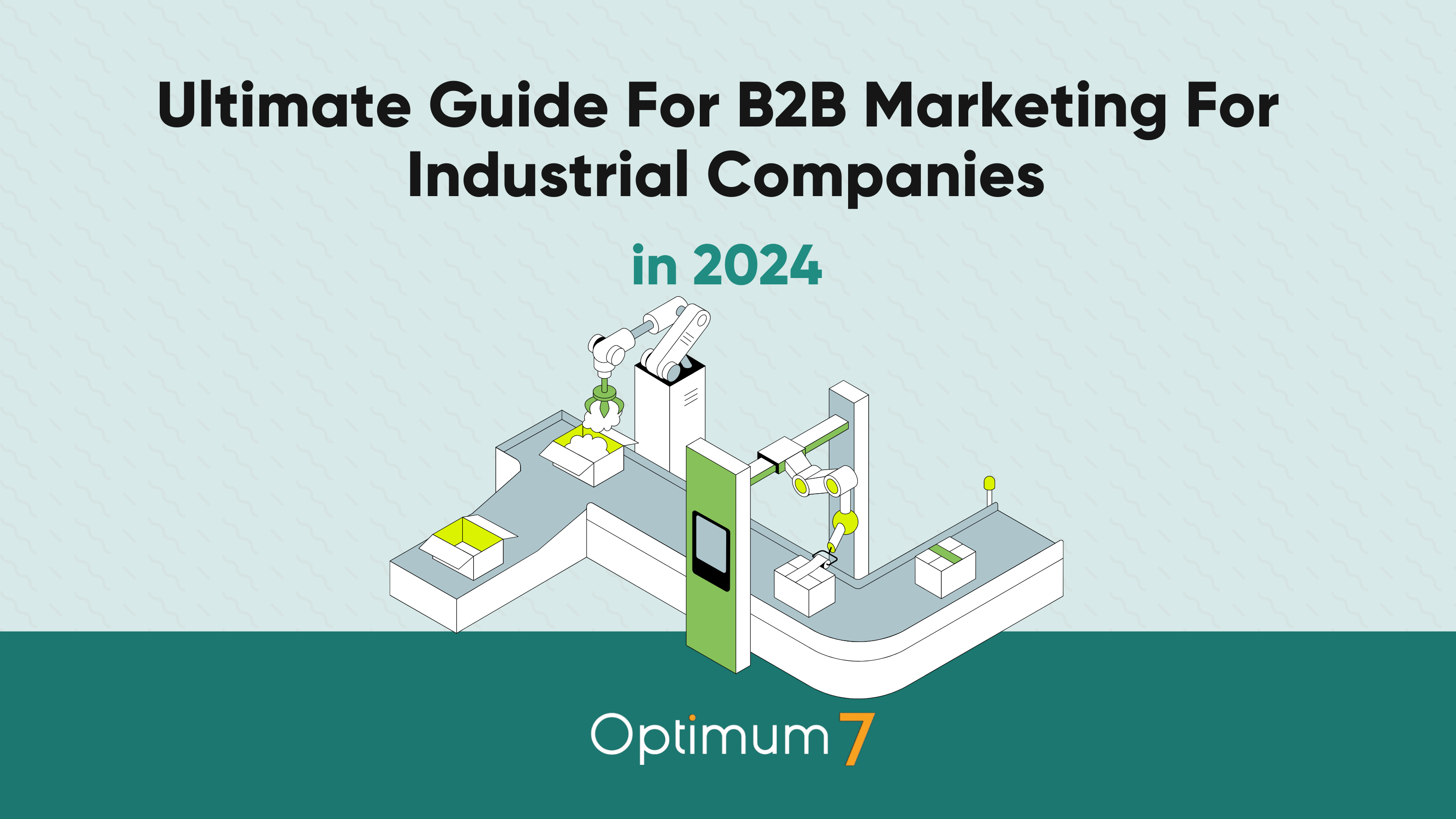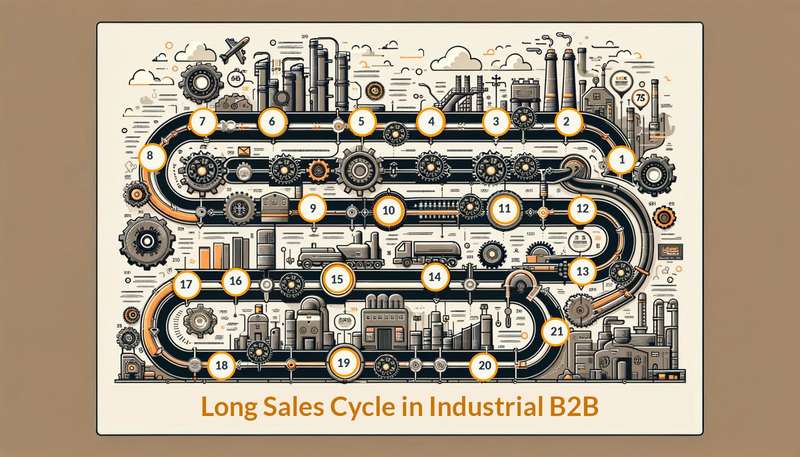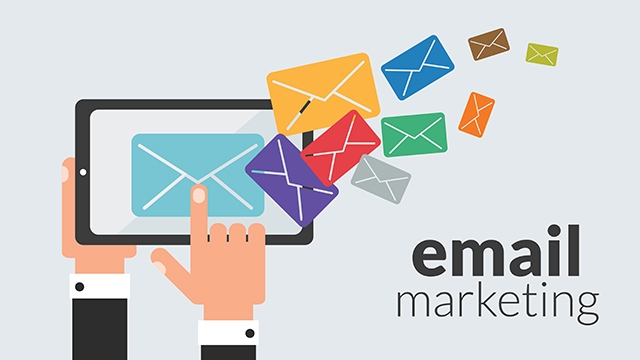As we enter 2025, the B2B marketing landscape for industrial companies is rapidly evolving, driven by technological advancements and changing market dynamics. A key development is the integration of generative AI in search engine algorithms, altering how industrial companies approach SEO and content creation. This technology’s ability to generate informative content is reshaping search results, necessitating a refined content strategy that prioritizes quality and relevance.
In this digital transformation, the importance of brand building remains paramount. For industrial companies, establishing a strong brand is crucial for differentiation and trust-building. It involves more than visual identity; it’s about crafting a reputation for reliability, quality, and innovation. This guide aims to navigate through the complexities of B2B marketing, from leveraging AI in digital strategies to reinforcing brand identity, ensuring industrial companies remain competitive and visible in 2025.
Table of Contents
- Understanding the Industrial B2B Landscape
- Implementing a Holistic Marketing Strategy
- Leveraging Digital Marketing Tools
- Sales Enablement and Lead Generation
- Navigating the Long Sales Cycle
- Measuring Success and ROI
- Preparing for Future Trends
Understanding the Industrial B2B Landscape
In 2023, a notable trend in the industrial B2B sector was the extension of the sales cycle. This trend reflects the increasing complexity and scale of purchasing decisions in the industry. Companies now require nearly 35 touch points before a sale is finalized. This increase in touch points is a result of buyers becoming more cautious and thorough in their decision-making process, often seeking extensive information and assurance before committing to a purchase. As we move into 2025, this trend of elongated sales cycles is expected to continue, further emphasizing the need for a more strategic and encompassing approach to marketing.
To effectively navigate this extended sales cycle, a holistic marketing strategy is essential. Such a strategy encompasses multiple facets of marketing communication and utilizes a variety of channels to engage with potential customers at different stages of their buying journey. This approach is critical in achieving the required number of touch points in a meaningful and impactful way.
Key Components of a Holistic Marketing Strategy for Industrial B2B
Content Marketing
Given the need for extensive information by B2B buyers, content marketing becomes a pivotal tool. Informative blogs, whitepapers, case studies, and product demos help in educating the buyer and positioning the company as a thought leader. With the advancement of AI in content generation, having content is no longer a strategy. It’s crucial to provide unique insights and increase your content velocity to keep up with your competition. Companies that move slow will be left behind. This past year we’ve seen Google take the stance that AI content is not bad – this means leveling up your content production with AI assistance is crucial for long term success and market domination.
Email Marketing
Personalized email communication is vital in nurturing leads. Regular updates, newsletters, and targeted content can help maintain engagement and gradually move leads through the sales funnel. As we see the amount of organic traffic from informational queries slowly diminish with the rapid onslaught of generative AI in search results, we must pivot to more traditional methods for ensuring we have sufficient engagement. Building and nurturing an email list is a safeguard against future upsets in the digital world – remember: Google controls your organic traffic, but you control your email list.
Social Media and Online Communities
Platforms like LinkedIn are crucial for connecting with professionals in the industry. Participating in online forums and discussions can also be an effective way to engage with potential clients. In B2B, you need to expect that your prospects are doing their research about you. Respond to reviews online – it can make the difference between a sale and a click. And ensure your profiles are up to date and look up to date – no one wants to do business with a company that isn’t active.
Digital Advertising
Targeted digital ads can help increase brand visibility and keep the company top-of-mind for potential buyers. This includes pay-per-click campaigns, display ads, and retargeting strategies. As we see a greater need for more touch points for a sale, the use of paid media helps us collect those touch points faster. It’s also a highly successful way to ensure all products are displayed appropriately, especially with Google Shopping.
SEO and SEM
Search engine optimization for industrial supply businesses ensure that your company’s digital content is easily discoverable by potential buyers actively seeking solutions. Again, as content gets easier to create, the need for well structured, and technically proficient websites becomes more and more valuable. Even more, Google has released a slew of major updates in 2023, and we can expect something similar throughout 2025. Keeping your site healthy is a great way to stay ahead.
In conclusion, as the sales cycle for B2B transactions in the industrial sector continues to elongate in 2025, a holistic, multi-channel marketing strategy becomes crucial. This approach ensures that companies can effectively achieve the necessary number of touch points, providing valuable, relevant content to potential customers at every stage of their buying journey.
Implementing a Holistic Marketing Strategy in Industrial B2B
Continuing from the holistic marketing strategy, let’s delve into how this approach directly addresses the challenges of the industrial B2B sector and sets the stage for successful marketing campaigns in 2025.
Integration Across Channels for Consistent Messaging: The essence of a holistic strategy lies in its integrated approach. Consistency across various channels, be it social media, email, or digital advertising, ensures a cohesive brand message. This consistency aids in reinforcing brand recognition and trust, which are crucial in a market where decisions are made after multiple touchpoints.
Leveraging Data for Targeted Marketing: The extended sales cycle and numerous touchpoints necessitate precise targeting. Utilizing data analytics to understand customer behavior, preferences, and pain points allows for more targeted marketing efforts. This data-driven approach ensures that each touchpoint is relevant and effective, increasing the likelihood of progressing leads through the sales funnel.
Educational Content as a Value Proposition: In the industrial sector, where products and services are complex, providing educational content is a key value proposition. Webinars, how-to guides, and technical articles serve not just to inform but also to demonstrate expertise and thought leadership. This kind of content can be particularly effective in the early stages of the buyer’s journey, where information gathering is paramount.
Personalization Across Touchpoints: With an average of 35 touchpoints, personalization becomes more than a perk—it’s a necessity. Tailoring communication based on the stage of the buyer’s journey, specific industry needs, and past interactions can significantly enhance the effectiveness of marketing efforts. Personalization helps in creating a more engaging and relevant experience for potential customers.
Technology Integration for Efficiency and Impact: Tools like CRM systems, marketing automation, and AI-driven analytics play a crucial role in executing a holistic marketing strategy. They enable efficient management of touchpoints, automate repetitive tasks, and provide insights for continuous optimization of marketing campaigns.
Feedback Loops and Continuous Improvement: A holistic strategy is not static; it evolves based on feedback and performance data. Regular analysis of marketing campaigns’ effectiveness, coupled with feedback from sales teams and customers, informs necessary adjustments. This iterative process ensures that the marketing strategy remains aligned with market dynamics and customer expectations.
Synergy Between Marketing and Sales: In an elongated sales cycle, the synergy between marketing and sales is critical. Marketing efforts need to be aligned with sales objectives, ensuring a smooth transition of leads from marketing to sales. Regular communication and shared goals between these teams can significantly improve the efficiency of the sales process.
By embracing a holistic marketing strategy that integrates various channels and leverages technology and data, industrial B2B companies can effectively navigate the complexities of the extended sales cycle. This approach not only facilitates reaching the required number of touchpoints but also ensures that each interaction adds value, driving towards successful conversions in the competitive landscape of 2025.
Leveraging Digital Marketing Tools
Building on the foundation of a holistic marketing strategy, the next step is to explore specific tactics and tools that can enhance the effectiveness of B2B marketing for industrial companies in 2025.
In the digital era, the right tools can make a significant difference in how effectively a company can execute its marketing strategy. Here’s how industrial companies can leverage these tools:
Search Engine Optimization (SEO)
SEO strategies have evolved in 2025 to focus more on product-specific details and user-generated content (UGC)
- Optimizing SKU Titles: Including SKUs in product titles enhances search visibility, especially for buyers who search with specific product identifiers.
- Merchant Center Listings: Optimizing product listings in merchant centers is crucial. Detailed descriptions, high-quality images, and accurate SKU data improve visibility in shopping search results.
- Category Page Optimization: Enhancing category pages with relevant keywords, user-friendly navigation, and clear product categorization aids in better search engine ranking and user experience.
- Implementing Reviews on Product Pages: Incorporating UGC, like customer reviews, on product pages has become a significant factor. Reviews not only boost SEO but also increase trust and credibility among potential buyers.
- User Experience Focus: User experience is a top priority. Ensuring fast load times, mobile optimization, and intuitive navigation are essential for keeping visitors engaged and reducing bounce rates.
Content Marketing
Content marketing in 2025 emphasizes engagement and relevance:
- Engaging Different Levels of Awareness: Blogs should cater to varying levels of customer awareness, from those just beginning their research to more informed buyers.
- Case Studies: Case studies are more effective when they focus on specific industries rather than adopting a generic approach. They should highlight unique solutions provided to clients, demonstrating expertise and value.
- Industry-Specific Content: Creating content tailored to specific industries helps in addressing unique challenges and pain points, thereby resonating more with the target audience.
Social Media
LinkedIn remains the primary platform for B2B marketing, while other platforms are emerging:
- LinkedIn: Continues to be the most effective platform for B2B engagement and networking.
- X (formerly Twitter): Gaining traction in the B2B space, offering new opportunities for industrial companies to reach and engage with their audience.
Email Marketing
Developments in email marketing tools have impacted strategies:
- Klaviyo’s Public Debut: With Klaviyo going public, it’s become a preferred choice for industrial B2B companies for its advanced automation capabilities and integration with e-commerce platforms.
Analytics
Changes in analytics tools have influenced how performance is measured:
- GA4 Rollout: The introduction of GA4 has changed how year-over-year data is compared. The new platform offers more advanced tracking and analysis capabilities, but requires a fresh approach to data interpretation.
Incorporating these focused strategies into B2B marketing efforts in 2025 allows industrial companies to not only align with the latest trends but also effectively reach and engage their target audience. Optimizing for SEO with a keen focus on SKU titles, merchant listings, and UGC, coupled with targeted content marketing and leveraging the latest tools in social media and email marketing, positions these companies for success in a highly competitive digital landscape.
Sales Enablement and Lead Generation in 2025
As we move into the next section, we focus on the critical aspects of sales enablement and lead generation, which have evolved to meet the demands of the extended sales cycles and complex decision-making processes in the industrial B2B sector in 2025.
Aligning Marketing and Sales
The alignment between marketing and sales teams has become more crucial than ever. Integrated strategies ensure that marketing efforts lead seamlessly into sales processes, enhancing efficiency and conversion rates. Utilizing shared CRM and analytics tools allows for better tracking of customer interactions and preferences, enabling more personalized and effective sales approaches.
Advanced Lead Generation Techniques
Utilizing advanced targeting capabilities in digital marketing, including SEO, social media, and email marketing, helps in attracting high-quality leads. Then distributing content through various channels and platforms, including industry forums and publications, increases reach and attracts potential leads from specific target segments. This ultimately allows the opportunity to form partnerships with complementary businesses or industry influencers that can open up new lead generation avenues.
Nurturing Leads Through the Sales Funnel
Implementing marketing automation tools like Klaviyo for email marketing allows for the systematic nurturing of leads with personalized content and follow-ups. Providing valuable, educational content at different stages of the buyer’s journey helps in building trust and positioning the company as a knowledgeable leader in the field. And consistent engagement through various touchpoints, including social media, webinars, and industry events, keeps the brand top-of-mind and helps in progressing leads through the funnel.
Measuring and Optimizing Performance
Leveraging tools like GA4 for analytics provides insights into lead generation and nurturing effectiveness, allowing for data-driven decisions. Regular A/B testing of marketing campaigns, landing pages, and email strategies helps in identifying the most effective tactics for lead conversion. Establishing feedback loops between marketing and sales teams ensures continuous improvement and adaptation of strategies based on real-world performance and customer feedback.
By focusing on these key areas in sales enablement and lead generation, industrial B2B companies in 2025 can effectively address the challenges of longer sales cycles and more complex buying processes. Aligning marketing and sales efforts, utilizing advanced lead generation techniques, nurturing leads through the funnel, and continuously measuring and optimizing performance are essential steps in converting prospects into loyal customers in the competitive industrial market.
Navigating the Long Sales Cycle in Industrial B2B in 2025
The extended sales cycle in the industrial B2B sector requires a strategic approach. In 2025, this aspect of the industry has become even more pronounced, demanding tactics that cater to prolonged decision-making processes and multiple stakeholder engagement.
Understanding the Extended Cycle
A deep understanding of the buyer’s journey is more important than ever. Industrial B2B companies need to recognize and address the different stages from awareness to decision-making. Simultaneously, mapping out the various stakeholders involved in purchasing decisions and addressing their unique concerns becomes critical for effective communication and engagement.
Strategies for Maintaining Engagement
Developing a long-term content strategy is essential for keeping the audience engaged over time. This includes providing industry insights, product updates, and thought leadership content. Regular touchpoints through various channels like email, social media, and webinars are necessary to maintain interest and engagement throughout the sales cycle.
Personalization and Trust-Building
Segmentation and personalization of marketing efforts are key in addressing the specific needs of different audience segments. Building trust is equally important, achieved through hosting industry events, participating in trade shows, and engaging in community forums. These initiatives help establish a company’s presence as an industry authority.
Leveraging Technology for Efficiency
Effective management of long-term relationships in the extended sales cycle is facilitated by the use of CRM systems and automation tools. These tools help in tracking customer interactions, preferences, and their progression through the sales cycle. Predictive analytics can be used to identify potential leads more likely to convert, enabling a more focused approach to sales.
Measuring and Adapting
Continuously tracking the performance of various marketing and sales strategies is crucial. Analytics play a significant role in understanding what resonates with the audience, allowing companies to adjust their tactics for better alignment with customer needs. Collecting feedback from both potential and existing customers is essential for understanding their evolving needs and preferences, enabling companies to adapt their strategies effectively.
In 2025, navigating the long sales cycle in the industrial B2B sector requires a blend of strategic content delivery, personalized engagement, trust-building initiatives, efficient use of technology, and a commitment to continuous improvement based on performance data and customer feedback. These elements are essential for industrial B2B companies to succeed in a complex and evolving marketplace.
Measuring Success and ROI in B2B Marketing for Industrial Companies in 2025
In 2025, the emphasis in measuring success and ROI in B2B marketing for industrial companies has shifted significantly towards brand visibility and awareness. This change reflects the growing understanding that long-term market presence and recognition are crucial for sustained business growth.
Prioritizing Brand Visibility and Awareness
- Brand Visibility Metrics: Key performance indicators now prioritize metrics that gauge brand visibility, such as share of voice in the market, brand mention frequency across digital channels, and search engine ranking positions for key industry terms.
Supporting KPIs and Metrics
- Engagement Metrics: While brand visibility takes the lead, engagement metrics like website traffic, social media interactions, and content engagement remain vital to understand how audiences interact with the brand.
- Lead Quality and Conversion Rates: The quality of leads generated and their conversion rates continue to be important, offering insights into the effectiveness of specific marketing tactics.
Utilizing Advanced Analytics Tools
- Adaptation to GA4: With the introduction of GA4, industrial companies need to adapt their analysis methods. Despite challenges in year-over-year comparisons, GA4 offers more granular insights into user behavior and campaign effectiveness.
- Custom Dashboards for Brand Tracking: Custom dashboards focusing on brand visibility and awareness metrics help in monitoring these KPIs effectively and facilitate quick decision-making.
- Data-Driven Strategies: The focus on brand visibility necessitates a data-driven approach to continually refine branding strategies and messaging.
- Regular Strategy Reviews: Continuous evaluation and adaptation of marketing strategies are key, especially in light of the dynamic nature of brand perception and market presence.
Collaborative Efforts Across Teams
- Marketing and Sales Synergy: Aligning the efforts and data of marketing and sales teams is essential to create a unified approach towards building and maintaining brand visibility and awareness.
In 2025, for industrial B2B companies, measuring success and ROI in marketing revolves around enhancing and tracking brand visibility and awareness. This shift reflects a strategic focus on building a strong market presence, which is essential for long-term business success. By prioritizing these aspects and supporting them with other relevant metrics, and by leveraging advanced analytics tools, companies can effectively navigate the competitive landscape and achieve sustained growth.
Future Trends in Industrial B2B Marketing: 2025 and Beyond
As we look towards the future of industrial B2B marketing, certain trends are expected to shape the landscape significantly. Understanding and preparing for these trends will be crucial for companies aiming to maintain a competitive edge.
Increasing Importance of Video Content
Video content is expected to become even more critical in marketing strategies. Engaging, informative videos can effectively demonstrate products, explain complex processes, and share industry insights, catering to the growing preference for visual learning among audiences.
Advances in video technology, like augmented reality (AR) and virtual reality (VR), will offer new ways to create immersive and interactive customer experiences.
Challenges in Marketing Attribution
As the customer journey becomes more multifaceted with numerous touchpoints, attributing conversions to specific marketing efforts will become increasingly challenging.
Companies will need to invest in more sophisticated analytics tools and models to accurately track and attribute the impact of their marketing campaigns.
Shifts in Organic Traffic and Keyword Strategy
There will be a noticeable decrease in organic traffic from generic or ‘junk’ keywords, as search engines continue to impose generative AI results for more informational level queries.
Marketing efforts will need to concentrate more on bottom-of-funnel keywords that align with specific, high-intent searches. This approach targets potential customers who are closer to making a purchasing decision.
Adapting to These Future Trends
Companies should integrate video content strategically into their marketing efforts, focusing on creating high-quality, informative, and engaging videos that appeal to their target audience. To overcome attribution challenges, investing in advanced analytics and AI tools will be essential for gaining accurate insights into the effectiveness of marketing campaigns. SEO and content strategies will need to be more refined, focusing on creating high-quality content that targets bottom-of-funnel keywords and effectively addresses the specific needs of the target audience.
By anticipating these future trends and starting to incorporate strategies to address them, industrial B2B companies can position themselves for continued success. Emphasizing video content, preparing for more complex marketing attribution, and refining SEO and content strategies to focus on high-intent keywords are key steps for staying ahead in the rapidly evolving industrial marketing landscape.
Partnering with Optimum7 for Success in 2025’s Industrial B2B Marketing
As 2025 brings complex challenges in the B2B marketing landscape, Optimum7 emerges as the strategic partner for industrial companies navigating this evolving terrain. With our expertise in cutting-edge technologies and innovative strategies, we’re poised to help your business stay ahead of the curve.
Optimum7 specializes in enhancing brand visibility and crafting targeted, high-quality content tailored to the industrial B2B market. Our approach is designed to navigate the extended sales cycles and focus on high-intent SEO strategies, ensuring that your marketing efforts effectively convert prospects into loyal customers. We understand the importance of adapting to the latest trends and technologies in digital marketing, and our team is committed to continuously evolving our strategies to align with your unique business needs.
In choosing Optimum7, you’re not just selecting a marketing agency; you’re gaining a partner dedicated to your long-term success. Our collaborative approach means we work closely with your team, aligning our marketing expertise with your business objectives to drive tangible results. Let Optimum7 be your guide to thriving in the competitive industrial B2B marketplace of 2025 and beyond. Contact us today.






